
NPS Photo 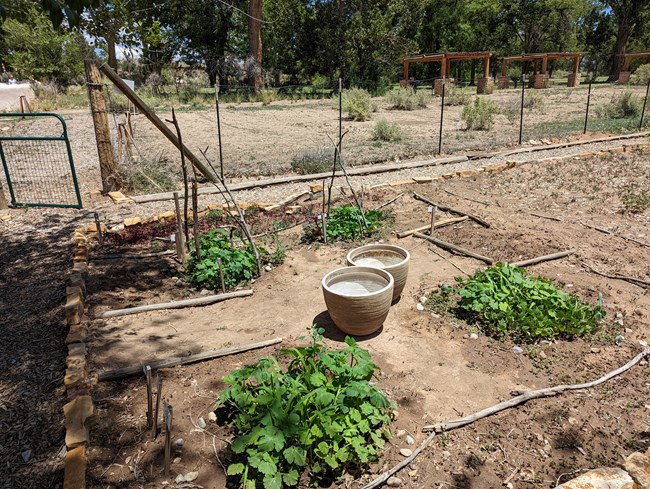
Nicoletta Browne, NPS The plans for the Heritage Garden were based on archeological, ethnobotanical, and historical research in the Four Corners Region and the North American Southwest in general, including research conducted at Aztec Ruins. This research allowed modern scientists and farmers to obtain a broad understanding of the types of domesticated and semi-domesticated crops that the ancestral Pueblo people might have grown here. Both through natural selection and selective breeding on the part of indigenous people, the varieties of plant featured in the heritage garden adapted to tolerate drought and heat, as well as many pests and diseases found in the area. 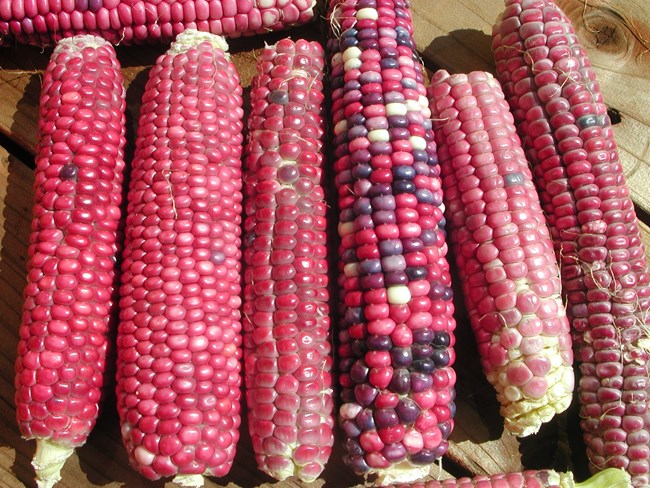
NPS Photo Ancient AgricultureAncestral Pueblo farmers in the Four Corners region grew varieties of corn, beans, and squash, all of which were first domesticated and cultivated between 12000 and 6000 years ago in Mesoamerica. The climate there, overall, is wetter and more humid, and it took time for a combination of natural selection and selective breeding to allow people to develop varieties better adapted to the drier climate of the Four Corners region.By at least 4500 years ago, the indigenous peoples of what is now the American Southwest had begun cultivating corn. This occured via migrations and emigrations of people, as well as trade of both seeds and agricultural knowledge. Rock shelters in New Mexico have provided some of the earliest records of corn being grown in what is now the United States. Later on, squash and beans were also domesticated (in that order), from plants native to Mesoamerica, and indigenous people slowly bred varieties that could thrive farther and farther north. By the time that Chaco and Aztec were at their peak, the three plants were the agricultural staples of the Pueblo people, although they continued to hunt and gather wild plants. 
Nicoletta Browne, NPS 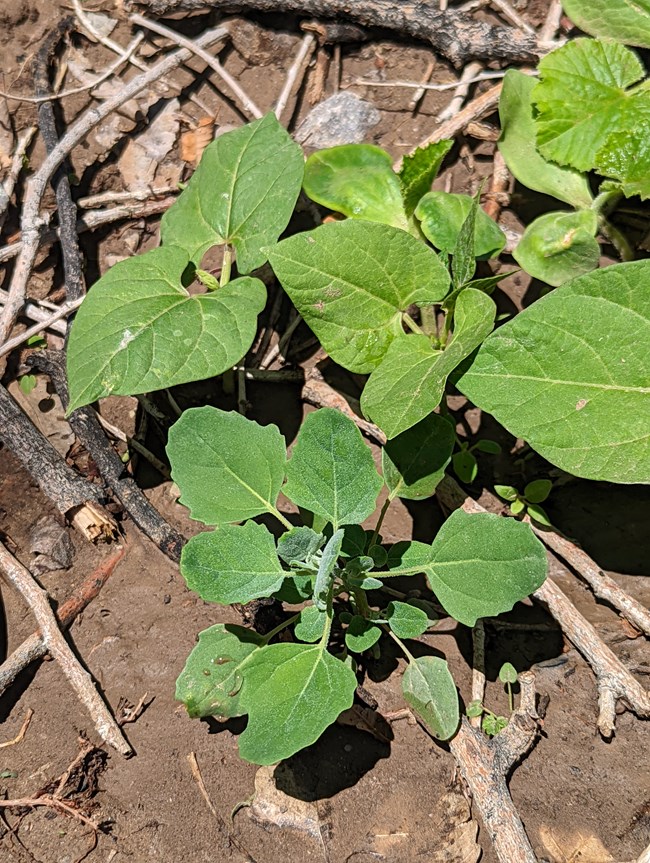
Nicoletta Browne, NPS Quelites: "Useful Weeds"Although corn, beans, and squash were the main agricultural crops grown at Aztec, the ancestral Pueblo people overall had a highly varied diet. A large percentage of the food they ate came from the wild, in the form of the animals they hunted and a variety of wild plants they gathered. Some of these wild plants were gathered in areas outside of their settlements. Ancestral Pueblo people realized, however, that many of the "weeds" that grew in disturbed areas near their buildings or on the fringes of their gardens were edible or useful for other purposes. These plants included goosefoot, wild tomatillos (groundcherries), amaranth, purslane, tansymustard, Rocky Mountain beeweed, and sunflowers. Collectively, these plants are now referred to as quelites, the Spanish word for spinach, although of course the inhabitants of pre-Colonial Aztec would not have used this term to describe them. Farmers would tolerate or even encourage these plants to grow in irrigation ditches and their gardens, on the edges or in between clusters of their crops. In addition to providing a nutritious source of food, allowing quelites to grow had other benefits. They created ground cover, which kept the soil from drying out and helped keep wind erosion under control. Some of them attracted useful pollinators such as bees and butterflies, and they may have also helped lure pests away from the more delicate crops such as corn. Quelites could also be used as "green manure" by cutting them and folding into the soil, where they would decay into compost that would enrich the soil and increase productivity. 
NPS Photos, Graphic Design by Nicoletta Browne WaterObtaining enough water for agriculture has long been one of the biggest challenges in the Southwest. The ancestral Puebloans used farming and irrigation techniques that were adapted to the dry climate and low rainfall. In canyons and arroyos, on alluvial fans, and on the tops of mesa, the ancestral Pueblo farmers used dry farming, which primarily relies on rainfall and also employs techniques like mulching to help retain water in the soil. Near springs, they would construct water catchment ditches, dams, and terraces to direct water flow. In areas with a more permanent water source, like the Animas River near Aztec Ruins, they employed flood irrigation: a series of small ditches would direct water, particularly overflow water, from a river or lake into their fields. In addition, they would employ basin and waffle grids to help collect water around individual plants. Perhaps even more importantly, the plant husbandry of the Pueblo people was crucial to their success as farmers. As previously mentioned, squash, and beans are not native to the Colorado Plateau region, but over hundreds of years, farmers bred varieties that could tolerate less water, more wind, and drier soil that thrived almost as well as native plants in the area. Obtaining and conserving water became less of a problem when the plants themselves needed less of it! 
Nicoletta Browne, NPS 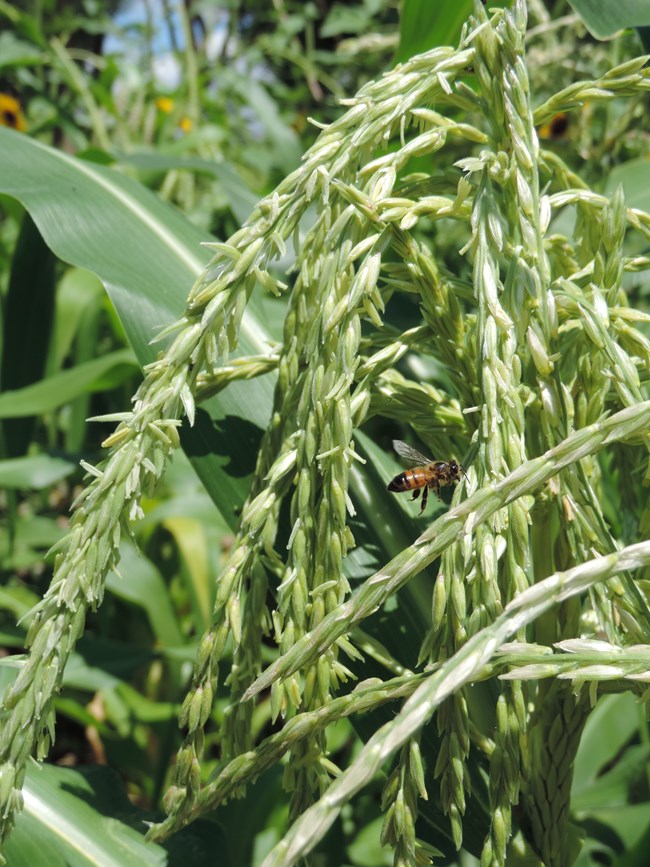
NPS Photo Lessons for the Present DayMany of the farming techniques employed by the ancestral Pueblo people are still used by their modern descendents. Contemporary permaculture has recognized the importance of many of these techniques, albeit belatedly. For example, nutritionists now acknowledge the benefits of consuming wild and semi-wild edible greens for their high vitamin and mineral content. More and more gardeners in the United States tolerate the presence of some wild plants for a variety of other reasons, too: providing shade for soil in order to reduce evaporation, using weeds to produce compost or burying them in the soil as "green manure" to improve soil fertility, and attracting both pollinators and other animals (like ladybugs or spiders) that kill agricultural pests. The ancestral Puebloans' crop-rotation practices conserved soil nutrients, and their plant-breeding developed varieties that thrived in the dry climate and used significantly less water. As the already-dry western United States gets drier, and as climate change continues to affect us, the wealth of agricultural knowledge in the Pueblo world becomes even more relevant. Although the heritage garden, when planted, is not intended as a direct "recreation" of the farms that people would have tended here, it serves as a chance for monument visitors to learn more about the knowledge, adaptations, and lifestyle of ancestral Puebloans. In addition, it plays a role in maintaining heirloom, locally-adapted crop varieties bred by modern Puebloan people. Many of these varieties are endangered as a result of European colonization and loss of indigenous knowledge, and in a drying and warming world, it becomes ever-more important that such knowledge and the biodiversity engendered by it are preserved while that is still possible. 
NPS Photo 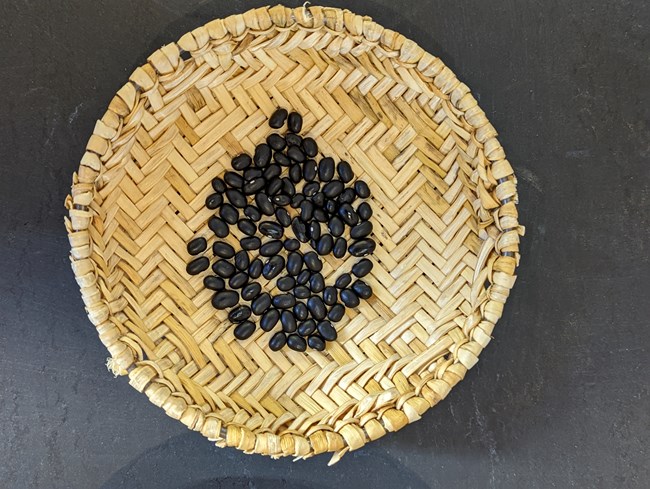
Nicoletta Browne (NPS) Sample Plant ListCorn VarietiesAcoma White FlourChapalote Pinole Maize Navajo Robin's Egg Velarde Azul y Blanco Bean VarietiesAztec White Runner BeanCalico Lima Bean Four Corners Gold Bean Hopi Black Bean Kitt Peak Wild Tepary Bean Rattlesnake Pole Bean 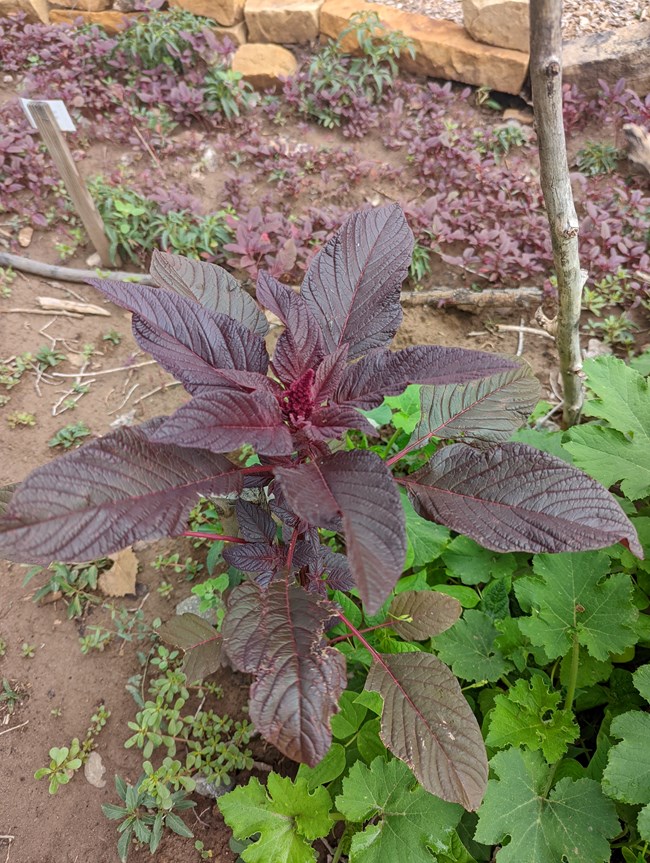
Nicoletta Browne, NPS Squash VarietiesAcoma PumpkinCalabaza Temporal Squash Magdalena Big Cheese Squash Taos Squash Zia Pueblo Canteen Gourd Wild and Semi-Wild PlantsHopi Black Dye SunflowerHopi Red Amaranth Hopi Short Staple Cotton Purslane Red Root Amaranth Sacred Datura Tohono O'Odham Devils Claw Wild Tomatillo (Groundcherry) Zuni Tomatillo (Groundcherry) 
NPS Photo |
Last updated: September 17, 2022
